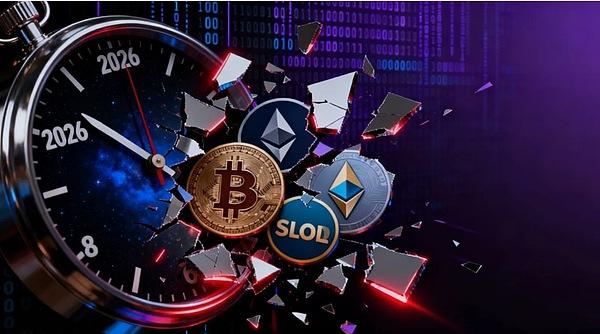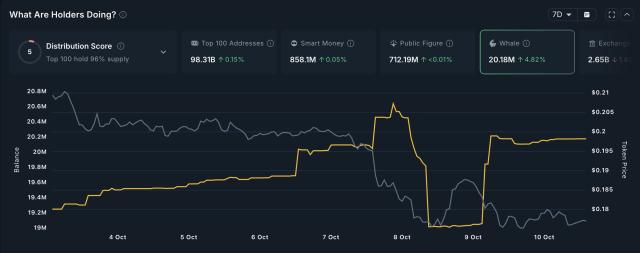Gavel platform's test token IBRL public sale raised over 30,000 SOL, with market value once reaching $66 million.
Written by: KarenZ, Foresight News
In the Crypto world, token distribution and liquidity guidance have always been key links determining project success, often accompanied by multiple shackles such as lack of transparency, market manipulation, sniping, and "sandwich" attacks. Currently, token issuance on Solana mostly adopts a joint curve model. While this mechanism can achieve initial price discovery, it has spawned the "token sniping" phenomenon - robots buying tokens at lightning speed before real users at low prices, then reselling to retail investors at high prices.
Gavel is committed to solving these pain points through on-chain mechanisms, bringing a fairer and more efficient token issuance experience to the Web3 ecosystem. This article will detail Gavel's background and mechanism.
What is Gavel?
Gavel is a platform focused on on-chain token distribution and liquidity guidance, developed by Ellipsis Labs and launched on Solana on May 20th. Gavel aims to help project parties issue tokens at lower costs and with more transparency, while protecting users from malicious behaviors in the market (such as sandwich attacks and sniping). Gavel also helps guide initial liquidity for tokens and ensures transaction fairness and safety through its unique anti-sandwich AMM mechanism.
Ellipsis Labs is also the core developer of Solana ecosystem's limit order book DEX Phoenix, with cumulative financing reaching $47.3 million.
In August 2023, Ellipsis Labs completed a $3.3 million seed round, led by Electric Capital, with participation from Robot Ventures and Anagram. Angel investors included Solana co-founder Anatoly Yakovenko (Toly), Polygon Labs CEO Marc Boiron, and Monad Labs CEO Keone Hon. This financing aimed to accelerate the development of innovative DeFi protocols like Phoenix.
In April and October 2024, Ellipsis Labs completed two rounds of financing. In April, they raised $20 million in Series A, led by Paradigm. In late October, they completed a $21 million financing round, led by Haun Ventures, with continued participation from existing investors Electric Capital, Toly, and Paradigm. This financing is dedicated to accelerating the development of blockchain Atlas for verifiable finance.
Gavel AMM is a product of Ellipsis Labs' early research work. At that time, Ellipsis Labs co-founder Jarry Xiao, @0xShitTrader, and Paradigm partners Frankie and Dan Robinson jointly wrote "A Sandwich-Resistant AMM", proposing application-layer mitigation measures for sandwich-resistant AMM (sr-AMM). By enforcing an invariant, they extended the constant product AMM: any exchange transaction cannot be executed at a price better than the price at the beginning of the slot window, thus protecting traders from front-running attacks. This is an extension of Vitalik Buterin's anti-front-running idea proposed in 2018.
How Does Gavel's Mechanism Work?
Gavel's core mechanism is divided into the following stages:
Initial Token Distribution: Project parties can flexibly choose distribution methods such as Dutch auctions, fixed-price first-come-first-served, or permissioned mechanisms. During the open token distribution period, users deposit SOL and receive token allocation when the distribution period ends. Regardless of the mode, Gavel ensures that the closing price of the public sale is completely consistent with the subsequent AMM opening price, eliminating arbitrage and sniping opportunities from the source. Taking the test token IBRL as an example, 70% of its total supply was distributed through a 24-hour public sale, with users receiving tokens proportionally by depositing SOL.
Anti-"Sandwich" AMM: When the initial distribution period ends, part of the token supply (uncertain whether it's the remaining total or partial tokens) and part of the raised SOL will be deposited into Gavel's anti-sandwich AMM. The amount of SOL will ensure that the AMM's opening price is consistent with the public sale's settlement price. The anti-sandwich AMM is suitable for guiding liquidity and promoting early price discovery while protecting traders from front-running attacks.
Temporary Liquidity Management and Liquidity Extraction: The AMM is used to guide initial liquidity, not to permanently support it. When token trading volume is sufficient, liquidity can be gradually withdrawn to avoid permanent lock-up losses. LPs in Gavel will extract part of the liquidity according to a fixed schedule, exchange it for tokens, and then burn the tokens (this schedule is configurable). This design satisfies initial liquidity needs, avoids long-term lock-up asset retention issues, and maintains token value stability through continuous deflation mechanisms.
Currently, launching a project on Gavel requires permission. Gavel allows project parties to adjust distribution parameters as needed, such as token allocation ratio and distribution mechanism, but platform participation is permissionless and fully managed by on-chain smart contracts.
Practical Case: Gavel Test Token IBRL
To demonstrate the effectiveness of its mechanism, Gavel launched the test token IBRL. It's important to note that Gavel states IBRL is only used to demonstrate the Gavel protocol's operation and has no actual or future utility. Its distribution and fee mechanism are as follows:
- Total supply: 1 billion tokens.
- 100% of raised funds and 100% of token supply allocated to the Gavel mechanism.
- Public sale: 700 million tokens distributed through a 24-hour public sale, with users receiving tokens proportionally.
- 3/7 of raised SOL paired with remaining 300 million IBRL, injected into AMM to ensure initial price matches public sale settlement price.
- Remaining 4/7 of SOL purchases and burns IBRL according to an exponential decay schedule, buying 0.01% of remaining tokens every 1000 Solana slots (about 6.5 minutes). This process is autonomously managed by on-chain smart contracts.
- AMM liquidity also decreases according to an exponential decay plan. Starting 7 days after public sale, 0.01% of liquidity is extracted every 2000 slots (about 13 minutes), up to 20,000 times. Extracted SOL is immediately used to directly purchase IBRL, which is then burned. This process is autonomously managed by on-chain smart contracts.
- The team retains no IBRL tokens or collected SOL.
- No fees are charged for initial token distribution. Gavel charges 30 basis points (0.3%) for AMM exchange transactions.
On the evening of May 21st, Gavel completed the IBRL token sale, with 2,480 participants contributing 30,747 SOL. IBRL's market value reached $66 million in the early morning of May 22nd and has since fallen to around $30 million.
Summary
Through innovative mechanism design, Gavel helps project parties raise funds at low costs, striving to achieve fair distribution, eliminate sniping opportunities, and create a fair, efficient, and user-friendly token distribution and liquidity guidance ecosystem through liquidity management and token burning mechanisms.
For project parties, Gavel can maximize fundraising efficiency and avoid value interception by intermediaries. For ordinary users, it provides a fair participation channel, free from robot price exploitation. Moreover, all operations are fully on-chain and auditable, powerfully promoting industry transparency.
References:
https://www.gavel.xyz/about
https://www.ellipsislabs.xyz/blog-posts/introducing-gavel
https://www.umbraresearch.xyz/writings/sandwich-resistant-amm








